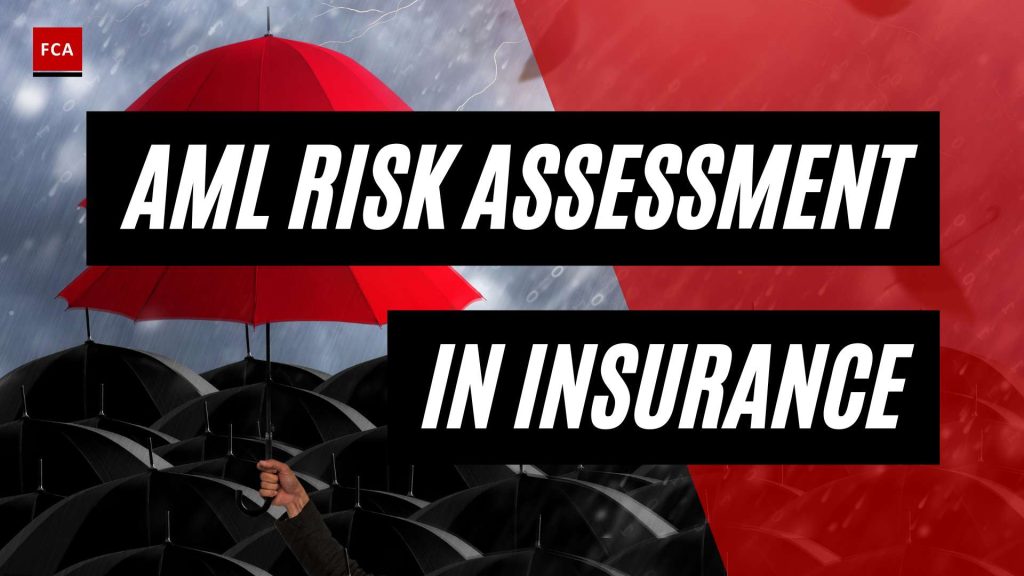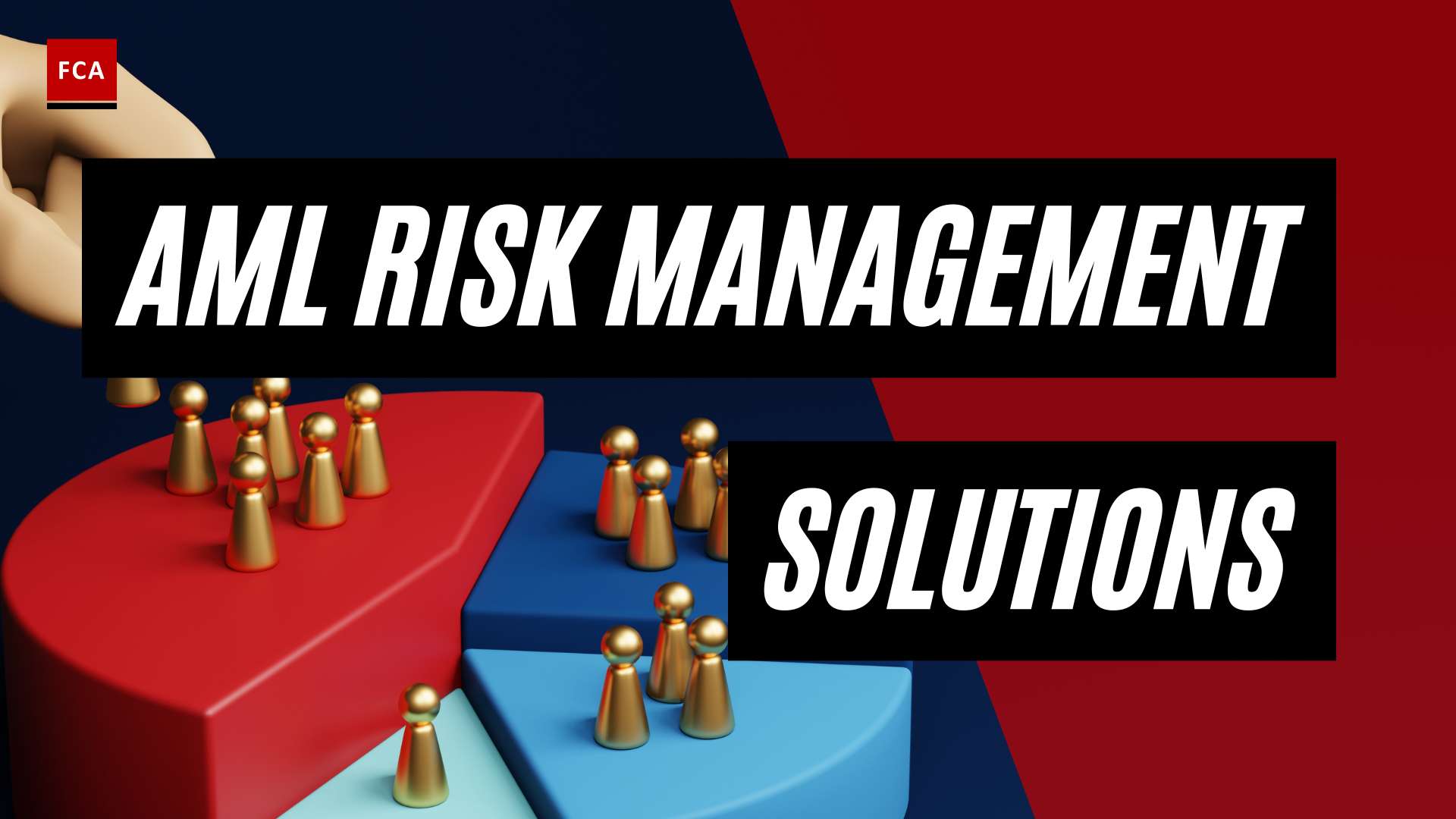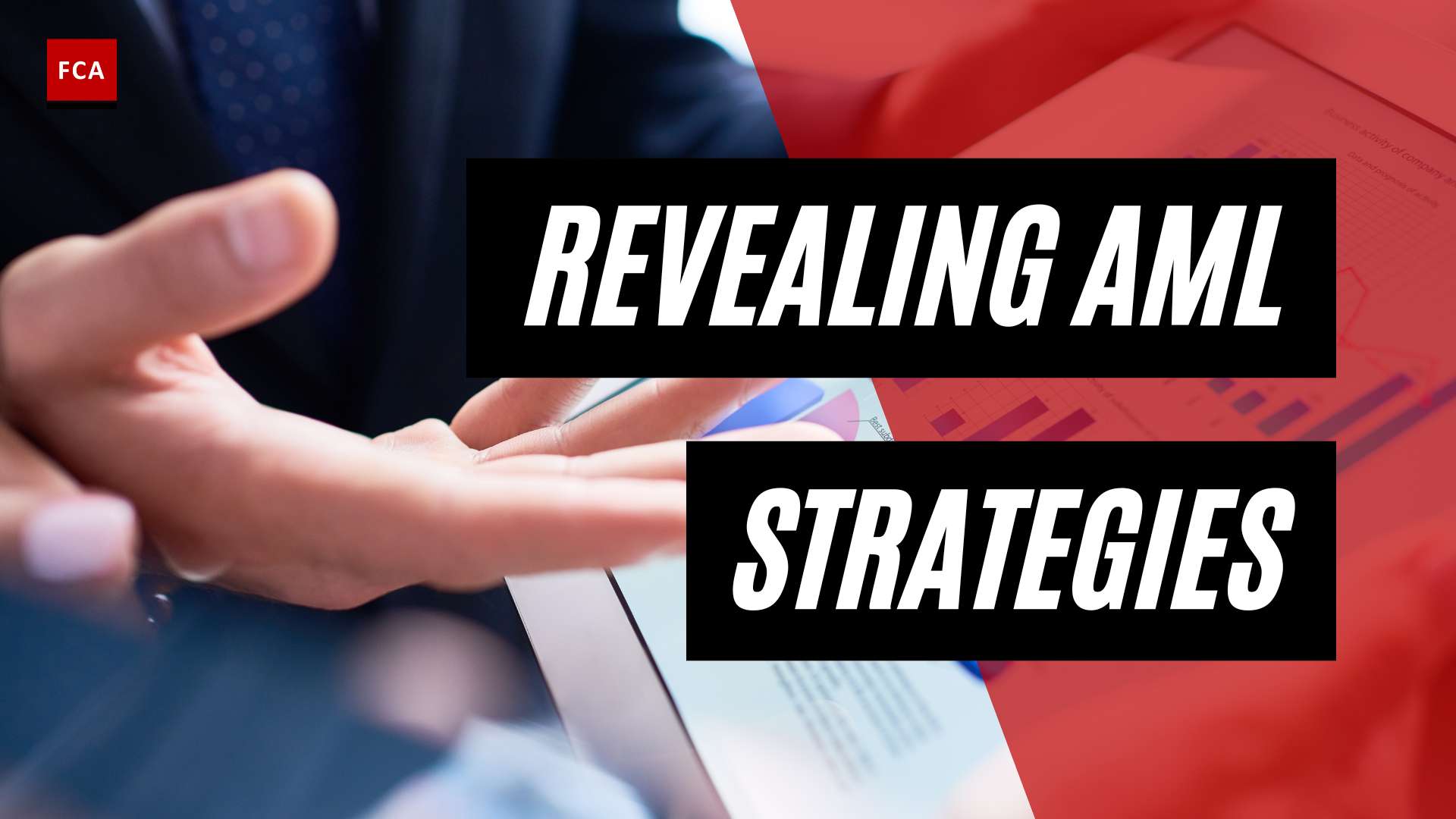AML in Insurance: Understanding the Risks
The insurance industry faces significant risks in terms of money laundering, making Anti-Money Laundering (AML) compliance crucial for insurance companies. Understanding the significance of AML compliance and recognizing the growing threat of money laundering in the insurance industry are essential in mitigating these risks effectively.
The Significance of AML Compliance in Insurance
AML compliance plays a vital role in the insurance industry to prevent illicit activities and protect the integrity of the financial system. Insurers are required to establish robust AML programs and adhere to regulatory guidelines to detect and deter money laundering activities. Failure to comply with AML regulations can result in severe consequences, including financial penalties and reputational damage.
Insurance companies are particularly vulnerable to money laundering due to the nature of their business. Criminals may exploit insurance policies and transactions to legitimize illicit funds, making it crucial for insurers to implement effective AML measures. By implementing AML compliance programs, insurance companies can safeguard their operations, maintain customer trust, and contribute to the overall effort of combating financial crime.
The Growing Threat of Money Laundering in the Insurance Industry
The insurance industry faces an increasing threat of money laundering activities. According to a study by the Coalition Against Insurance Fraud in the U.S., over 70% of insurers believe that the risk of money laundering in the insurance industry is significant. Criminals view insurance as a legitimate platform to launder money due to the complex nature of insurance transactions and the large volume of funds involved.
With the rise of technology and digitalization, the insurance industry is also exposed to cyber fraud, further increasing the risks of money laundering. It is estimated that the insurance industry could lose around USD 80.7 billion to cyber fraud by 2024. To combat these evolving risks, insurance companies must enhance their AML efforts and stay vigilant in identifying and preventing money laundering activities.
To mitigate the risks associated with money laundering, insurance companies should implement robust AML risk assessment practices, customer due diligence measures, and beneficial ownership checks. Leveraging technology, such as AI-powered identity verification solutions, can also enhance AML compliance in the insurance industry. By adopting proactive measures and staying updated on AML regulations, insurance companies can effectively combat the growing threat of money laundering and protect the integrity of the insurance sector.
AML Risk Assessment in Insurance
To effectively combat money laundering and mitigate its risks within the insurance industry, conducting a comprehensive AML risk assessment is of paramount importance. This section will delve into the significance of AML risk assessment in insurance, as well as key considerations that insurance companies should keep in mind.
Importance of AML Risk Assessment in Insurance
The importance of conducting AML risk assessments in the insurance sector cannot be overstated. Given the nature of insurance products and services, insurance companies are susceptible to various anti-money laundering (AML) risks. By conducting thorough risk assessments, insurance companies can identify and understand these risks, allowing them to implement robust controls and measures to prevent money laundering and the financing of terrorism.
AML risk assessments provide insurance companies with a systematic framework to evaluate the potential risks associated with their business operations, customers, products, and services. By assessing the inherent risks, insurance companies can tailor their AML compliance programs to effectively address and mitigate these risks. This proactive approach not only helps in complying with AML regulations but also safeguards the integrity of the insurance sector, promotes financial stability, and maintains public trust.
It is crucial for insurance companies to engage in ongoing AML risk assessments to adapt to the evolving landscape of money laundering and emerging risks. By regularly assessing and reassessing their AML risks, insurance companies can stay ahead of potential threats, develop appropriate risk mitigation strategies, and ensure compliance with regulatory requirements.
Key Considerations for AML Risk Assessment in Insurance
When conducting an AML risk assessment in the insurance industry, there are several key considerations that insurance companies should take into account:
-
Customer Due Diligence (CDD): Insurance companies should prioritize thorough and robust customer due diligence processes. Implementing effective CDD measures helps identify and verify the identity of customers, understand their financial activities, and assess the level of risk they pose. This helps insurance companies detect and prevent potential money laundering activities.
-
Product and Service Risk Assessment: Insurance companies should evaluate the AML risks associated with their various products and services. Different insurance products may present different levels of risk, requiring tailored risk mitigation strategies. By assessing the risks associated with each product and service, insurance companies can implement appropriate controls and monitoring procedures.
-
Technological Solutions and Data Analytics: Leveraging technology can significantly enhance AML risk assessment capabilities in the insurance sector. Advanced data analytics tools can help identify patterns, anomalies, and potential red flags indicative of money laundering activities. Insurance companies should embrace technological solutions to enhance their ability to detect and prevent money laundering effectively.
-
Regulatory Compliance: AML risk assessments should always align with the regulatory requirements specific to the insurance industry. Insurance companies must stay updated with the AML regulations imposed by regulatory bodies such as the insurance industry AML regulations in their respective jurisdictions. Compliance with these regulations ensures that insurance companies operate within the legal framework and contribute to the overall fight against financial crimes.
By considering these key factors, insurance companies can conduct effective AML risk assessments that enable them to identify vulnerabilities, implement appropriate controls, and mitigate the risks associated with money laundering. AML risk assessments serve as a foundation for robust AML compliance programs within the insurance industry, promoting integrity, security, and trust within the sector.
Mitigating AML Risks in Insurance
To effectively mitigate Anti-Money Laundering (AML) risks in the insurance industry, insurance companies must implement robust measures. This section explores three key strategies: customer due diligence, beneficial ownership checks, and leveraging technology for effective AML compliance.
Customer Due Diligence in AML Compliance
Customer due diligence (CDD) plays a crucial role in AML compliance for insurance companies. It involves verifying the identity of customers and assessing the risk they pose for money laundering activities. By conducting thorough CDD, insurers can identify and prevent potential risks before they occur.
Insurers are advised to implement CDD measures to enhance AML compliance, reducing the risk of being used by criminals for money laundering activities (Shufti Pro). This process typically includes verifying the customer’s identity through reliable and independent sources, collecting necessary documentation, and assessing the purpose and intended nature of the business relationship.
Beneficial Ownership Checks for AML Compliance
Beneficial ownership refers to the natural person(s) who ultimately owns or controls a customer. Conducting beneficial ownership checks is crucial for AML compliance in the insurance industry. It helps identify individuals who may be hiding behind complex ownership structures to launder money or engage in other illicit activities.
Insurers should implement thorough beneficial ownership checks to ensure transparency and prevent misuse of insurance products. By understanding the ultimate beneficiaries of insurance policies, companies can assess and mitigate the associated AML risks. This is particularly important for high-risk policies or when dealing with politically exposed persons (PEPs) or individuals from high-risk jurisdictions.
Leveraging Technology for Effective AML Compliance
Technology plays a vital role in strengthening AML compliance efforts in the insurance sector. Insurers can leverage advanced technology solutions to streamline their AML processes and enhance risk mitigation.
One effective technology-based solution is AI-powered identity verification. By utilizing artificial intelligence and machine learning algorithms, insurance companies can rapidly and accurately verify the identity of their customers. This can help mitigate money laundering risks effectively by enhancing customer identity verification processes (Shufti Pro). Such solutions can detect and flag suspicious identities or activities, ensuring adherence to AML regulations.
Additionally, implementing robust AML software can aid insurers in monitoring customer activities and financial transactions. These systems can help identify AML and Counter Financing of Terrorism (CFT) risks, enabling insurance companies to take appropriate measures to mitigate them. By automating AML compliance processes, insurers can ensure consistent monitoring and reporting, reducing the risk of non-compliance.
By prioritizing customer due diligence, conducting beneficial ownership checks, and leveraging technology, insurance companies can enhance their AML compliance efforts. These measures not only help mitigate potential risks but also contribute to the overall integrity and trustworthiness of the insurance industry.
AML Regulations in the Insurance Industry
To combat the risks of money laundering and protect the integrity of the insurance industry, regulatory bodies have implemented specific anti-money laundering (AML) regulations. These regulations aim to ensure that insurance companies establish robust AML programs and comply with the necessary requirements. Let’s explore the AML regulations in the United States, the European Union, and Singapore and Australia.
AML Regulations in the United States
In the United States, the Financial Crimes Enforcement Network (FinCEN) issued a regulation requiring insurance companies to establish anti-money laundering programs to protect the insurance industry from potential abuse by criminals and terrorists. The final rule mandates that insurance companies develop and implement written AML programs designed to prevent the company from being used to facilitate money laundering. The rule applies to “covered products” that have a higher risk for money laundering, such as permanent life insurance policies and annuity contracts with cash value or investment features. Other types of insurance, such as term life insurance, property and casualty insurance, and health insurance, are not covered by the rule (source).
Under these regulations, insurance companies are required to appoint a compliance officer responsible for ensuring effective implementation of the AML program. The program should include policies, procedures, and internal controls, as well as ongoing employee training and independent testing to monitor and maintain the program’s adequacy. Insurance companies must also file Suspicious Activity Reports (SARs) as part of their AML programs, reporting any suspicious activities related to insurance products.
AML Regulations in the European Union
In the European Union (EU), the regulation of the insurance industry falls under the purview of national regulators, with partial oversight from the European Insurance and Occupational Pensions Authority (EIOPA). The EU has implemented Anti-Money Laundering Directives (AMLDs) that apply exclusively to life and investment-related insurance. However, proposed reforms may extend AML obligations beyond these products, which has raised concerns within the insurance industry.
The AML and Countering the Financing of Terrorism (CFT) efforts in the EU are primarily overseen by national regulators, and each member state is responsible for implementing and enforcing AML regulations within its jurisdiction. These regulations require insurance companies to assess AML and CFT risks and implement risk-appropriate measures. The EU’s focus on broadening coverage requirements has prompted discussions about the potential impact on insurance companies (source).
AML Regulations in Singapore and Australia
In Singapore, the Monetary Authority of Singapore (MAS) regulates the insurance sector and sets AML and CFT obligations for insurers. Notice 314 applies specifically to life insurers, requiring them to comply with AML and CFT requirements. However, all insurers must assess AML/CFT risks and implement risk-appropriate measures. MAS encourages the use of regulatory technology (RegTech), machine learning, and advanced techniques to enhance AML/CFT compliance. Singapore also emphasizes the use of national digital identification systems for customer due diligence through biometrics, liveness detection, and document authenticity checks (source).
In Australia, the insurance industry is regulated by the Australian Prudential Regulation Authority (APRA). The Australian Securities and Investment Commission (ASIC) issues Australian Financial Services Licenses (AFSL) to insurance intermediaries. The Australian Transactions Report and Analysis Centre (AUSTRAC) supervises AML and CFT compliance in the insurance sector. Life insurers, sinking fund providers, and those providing advice on such products must comply with the AML/CFT Act and meet sanctions regulations, including the Autonomous Sanctions Act of 2011.
By adhering to these AML regulations, insurance companies can contribute to the prevention of money laundering and the protection of the insurance industry. It is essential for insurance professionals to stay updated on the specific requirements and obligations in their respective jurisdictions to ensure compliance and mitigate AML risks.
Challenges in AML Risk Assessment for Insurance Companies
As insurance companies strive to maintain compliance with anti-money laundering (AML) regulations, they encounter various challenges in conducting effective AML risk assessments. Identifying suspicious activities, addressing customer due diligence challenges, and integrating technological solutions are key areas that require attention.
Identifying Suspicious Activities in Insurance
Identifying suspicious activities within the insurance industry can be a complex task. Criminals often exploit the legitimate platform provided by insurers for money laundering activities. Insurers need to develop robust monitoring systems and employ skilled personnel who can recognize indicators of potential money laundering, such as unusual transactions, policy structures, or claims patterns. By implementing effective detection mechanisms, insurance companies can enhance their ability to identify and report suspicious activities.
Customer Due Diligence Challenges
Customer due diligence (CDD) is a critical component of AML risk assessment in insurance. However, conducting thorough CDD can be challenging due to the vast number of customers and the complexity of insurance products and services (Sanction Scanner). Insurance companies must verify the identity of customers, assess their risk profiles, and monitor their transactions to detect any potential money laundering activities. This process requires efficient systems, trained staff, and effective data management to ensure compliance and mitigate risks.
Integrating Technological Solutions for AML
The integration of technological solutions plays a crucial role in enhancing AML risk assessment in the insurance industry. Advanced technologies, such as artificial intelligence (AI) and machine learning, can streamline the identification of suspicious activities and improve risk detection capabilities (Shufti Pro). By leveraging AI-powered identity verification and data analytics, insurance companies can automate processes, reduce manual errors, and enhance the efficiency and accuracy of AML compliance efforts. The use of technology also enables real-time monitoring, alerts for unusual transactions, and the ability to adapt to evolving money laundering trends.
Insurance companies must invest in robust AML software and systems to effectively integrate technological solutions into their risk assessment processes. These tools enable better data analysis, identification of high-risk customers, and the ability to generate comprehensive reports for regulatory authorities. By embracing technology, insurers can enhance their AML risk assessment capabilities and strengthen their overall compliance framework.
In order to overcome the challenges in AML risk assessment for insurance companies, it is crucial for insurers to stay updated on AML regulations, invest in training for their employees, and collaborate with regulatory bodies, industry associations, and technology providers. By addressing these challenges head-on, insurance companies can effectively mitigate money laundering risks and contribute to a safer and more secure insurance industry.
The Role of AML Professionals in Insurance
Within the insurance industry, AML professionals play a vital role in enhancing AML risk assessment practices and ensuring compliance with regulatory requirements. Their expertise and efforts are essential for effective risk management and the prevention of money laundering and financial crimes.
Enhancing AML Risk Assessment Practices
AML professionals, such as Angela Salter, are at the forefront of efforts to enhance AML risk assessment practices in the insurance industry. They possess a deep understanding of the evolving landscape of AML regulations, emerging threats, and industry best practices. These professionals work diligently to identify and assess potential AML risks specific to the insurance sector.
By conducting comprehensive risk assessments, AML professionals evaluate the vulnerabilities within insurance operations and develop strategies to mitigate those risks. They collaborate with various stakeholders, including compliance officers, underwriters, and claims professionals, to implement effective controls and processes. Through their expertise, AML professionals contribute significantly to safeguarding the insurance industry from money laundering and other financial crimes.
Compliance and Risk Management in the Insurance Industry
The insurance industry is subject to AML regulations aimed at combating money laundering and terrorism financing. Insurance companies are required to establish policies, procedures, and systems to identify, assess, and manage AML risks (LinkedIn). AML professionals play a crucial role in ensuring compliance with these regulations.
They work closely with senior management and other stakeholders to develop and implement robust AML policies and procedures tailored to the specific needs of the insurance industry. These policies encompass customer due diligence measures, beneficial ownership checks, and the use of technology to detect and prevent suspicious activities.
Additionally, AML professionals oversee ongoing monitoring and auditing processes to ensure adherence to regulatory requirements. They provide guidance and training to insurance professionals, including agents and underwriters, to raise awareness and promote a culture of compliance. By integrating compliance and risk management practices, AML professionals contribute to the overall integrity and stability of the insurance industry.
In conclusion, AML professionals play a critical role in the insurance industry by enhancing AML risk assessment practices and ensuring compliance with regulatory obligations. Their expertise and dedication contribute to effective risk management, the prevention of money laundering, and the protection of the insurance sector from financial crimes. Through their efforts, AML professionals uphold the integrity of the industry and foster trust among stakeholders.
AML Risk Assessment in Insurance
To effectively combat money laundering in the insurance industry, conducting a comprehensive anti-money laundering (AML) risk assessment is crucial. AML risk assessment allows insurance companies to identify, understand, and mitigate potential risks associated with money laundering activities. By assessing these risks, insurance companies can implement appropriate controls and measures to ensure compliance and protect themselves from becoming unwitting facilitators of criminal activities.
Importance of AML Risk Assessment in Insurance
The significance of AML risk assessment in the insurance industry cannot be overstated. Studies have shown that the risk of money laundering in the insurance sector is significant, with the potential for substantial financial losses due to cyber fraud and other illicit activities. Criminals often target the insurance industry as it provides a legitimate platform for money laundering. Therefore, insurance companies must proactively assess the risks involved in their operations to prevent and detect money laundering activities effectively.
Key Considerations for AML Risk Assessment in Insurance
When conducting an AML risk assessment, insurance companies should consider several crucial factors. These considerations help identify vulnerabilities and develop appropriate risk mitigation strategies. Some key considerations include:
-
Customer Due Diligence: Implementing effective customer due diligence measures is essential for AML compliance in the insurance industry. Robust customer identification and verification processes help ensure that insurance policies are not exploited for money laundering purposes. Insurers should verify the identity of customers, assess their risk profiles, and monitor their transactions to detect any suspicious activities.
-
Beneficial Ownership Checks: Insurance companies should conduct thorough beneficial ownership checks to identify the individuals who ultimately own or control the policyholders. This helps uncover any hidden connections or potential risks associated with politically exposed persons (PEPs) or high-risk entities (Shufti Pro). By understanding the ownership structure, insurers can assess the potential risk of money laundering and take appropriate measures to mitigate it.
-
Leveraging Technology: The use of technology can significantly enhance AML compliance in the insurance industry. AI-powered identity verification solutions, for example, can streamline customer onboarding processes, improve fraud detection, and enhance risk assessment capabilities. By leveraging technology, insurers can efficiently monitor transactions, identify suspicious patterns, and detect potential money laundering activities.
By carefully considering these factors, insurance companies can conduct thorough AML risk assessments that enable them to identify and address potential vulnerabilities. This proactive approach to risk assessment helps protect insurance companies from reputational damage, financial losses, and regulatory penalties associated with non-compliance.
To stay up-to-date with AML regulations and requirements specific to the insurance industry, it’s essential for insurance professionals to continuously educate themselves and undergo AML training. Implementing robust AML policies and leveraging advanced technology solutions like AML software can further strengthen an insurance company’s ability to detect and prevent money laundering activities. By enhancing AML risk assessment practices and integrating compliance efforts with risk management strategies, insurance professionals can contribute to a more secure and compliant insurance industry.








